DM Sokal
Splenic Nerve Neuromodulation Reduces Inflammation and Promotes Resolution in Chronically Implanted Pigs
Sokal, DM; McSloy, A; Donega, M; Kirk, J; Colas, RA; Dolezalova, N; Gomez, EA; Gupta, I; Fjordbakk, CT; Ouchouche, S; Matteucci, PB; Schlegel, K; Bashirullah, R; Werling, D; Harman, K; Rowles, A; Yazicioglu, RF; Dalli, J; Chew, DJ; Perkins, JD
Authors
A McSloy
M Donega
J Kirk
RA Colas
N Dolezalova
EA Gomez
I Gupta
CT Fjordbakk
S Ouchouche
PB Matteucci
K Schlegel
R Bashirullah
D Werling
K Harman
A Rowles
RF Yazicioglu
J Dalli
DJ Chew
JD Perkins
Abstract
Neuromodulation of the immune system has been proposed as a novel therapeutic strategy for the treatment of inflammatory conditions. We recently demonstrated that stimulation of near-organ autonomic nerves to the spleen can be harnessed to modulate the inflammatory response in an anesthetized pig model. The development of neuromodulation therapy for the clinic requires chronic efficacy and safety testing in a large animal model. This manuscript describes the effects of longitudinal conscious splenic nerve neuromodulation in chronically-implanted pigs. Firstly, clinically-relevant stimulation parameters were refined to efficiently activate the splenic nerve while reducing changes in cardiovascular parameters. Subsequently, pigs were implanted with a circumferential cuff electrode around the splenic neurovascular bundle connected to an implantable pulse generator, using a minimally-invasive laparoscopic procedure. Tolerability of stimulation was demonstrated in freely-behaving pigs using the refined stimulation parameters. Longitudinal stimulation significantly reduced circulating tumor necrosis factor alpha levels induced by systemic endotoxemia. This effect was accompanied by reduced peripheral monocytopenia as well as a lower systemic accumulation of CD16(+)CD14(high) pro-inflammatory monocytes. Further, lipid mediator profiling analysis demonstrated an increased concentration of specialized pro-resolving mediators in peripheral plasma of stimulated animals, with a concomitant reduction of pro-inflammatory eicosanoids including prostaglandins. Terminal electrophysiological and physiological measurements and histopathological assessment demonstrated integrity of the splenic nerves up to 70 days post implantation. These chronic translational experiments demonstrate that daily splenic nerve neuromodulation, via implanted electronics and clinically-relevant stimulation parameters, is well tolerated and is able to prime the immune system toward a less inflammatory, pro-resolving phenotype.
Citation
Sokal, D., McSloy, A., Donega, M., Kirk, J., Colas, R., Dolezalova, N., Gomez, E., Gupta, I., Fjordbakk, C., Ouchouche, S., Matteucci, P., Schlegel, K., Bashirullah, R., Werling, D., Harman, K., Rowles, A., Yazicioglu, R., Dalli, J., Chew, D., & Perkins, J. (2021). Splenic Nerve Neuromodulation Reduces Inflammation and Promotes Resolution in Chronically Implanted Pigs. Frontiers in Immunology, 12, https://doi.org/10.3389/fimmu.2021.649786
| Journal Article Type | Article |
|---|---|
| Acceptance Date | Mar 28, 2021 |
| Publication Date | 2021 |
| Deposit Date | Dec 23, 2021 |
| Publicly Available Date | Dec 23, 2021 |
| Journal | Frontiers in Immunology |
| Electronic ISSN | 1664-3224 |
| Publisher | Frontiers Media |
| Peer Reviewed | Peer Reviewed |
| Volume | 12 |
| DOI | https://doi.org/10.3389/fimmu.2021.649786 |
| Keywords | autonomic nervous system; neuromodulation; stimulation; endotoxemia; specialized pro resolving mediators; inflammation; bioelectronic medicine; splenic nerve |
| Public URL | https://rvc-repository.worktribe.com/output/1554082 |
Files
OA
(9.7 Mb)
PDF
Publisher Licence URL
http://creativecommons.org/licenses/by/4.0/
You might also like
Challenging anaesthetic management of captive reindeer (Rangifer tarandus): Report of 4 cases.
(-0001)
Journal Article
Hypoxic ischaemic encephalopathy: recognising and treating the dummy foal
(-0001)
Journal Article
Basic veterinary management of reindeer
(-0001)
Journal Article
Gastrointestinal hyperammonaemia in a 35-day-old Warmblood-cross filly
(-0001)
Journal Article
Downloadable Citations
About RVC Repository
Administrator e-mail: publicationsrepos@rvc.ac.uk
This application uses the following open-source libraries:
SheetJS Community Edition
Apache License Version 2.0 (http://www.apache.org/licenses/)
PDF.js
Apache License Version 2.0 (http://www.apache.org/licenses/)
Font Awesome
SIL OFL 1.1 (http://scripts.sil.org/OFL)
MIT License (http://opensource.org/licenses/mit-license.html)
CC BY 3.0 ( http://creativecommons.org/licenses/by/3.0/)
Powered by Worktribe © 2025
Advanced Search
